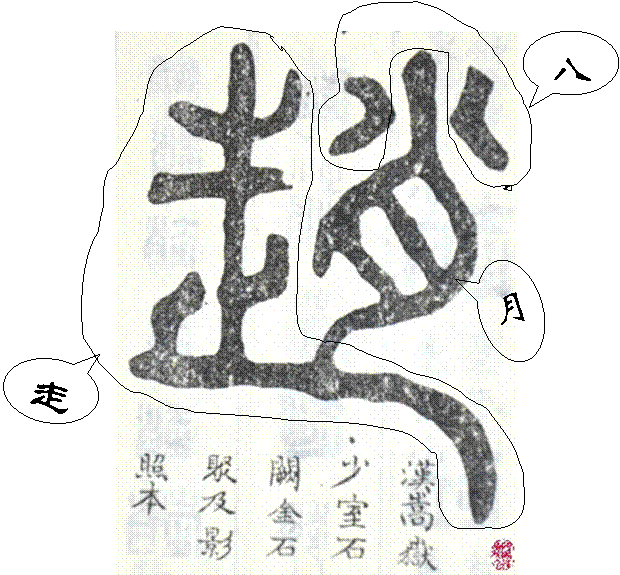Riddle Me a Tomb
4夹马异香 A Riddle From a Tomb At Bukit Brown
Contributed by Wang Cheng Min
While searching for the biggest grave at Bukit Brown, I chanced upon this grave, drawn to its unusual mirror- like stand .
I could not fathom the significance of the structure. And moved on to look for clues in the 2 pillars which flanked the tombstone and was stuck by the only two characters on each of the pillars.
The pillar on the left read 夹马 (squeeze the horse with your calves).
The pillar one on the right read异香 (extraordinary fragrance). I was wondering why 夹马异香 was used. It appeared to me that this could well be a riddle. But it had become far too hot to decipher what it means at Bukit Brown.
I studied the photographs of the pillars at home and came up with this answer:
走 (walk) is the answer for 夹马 (squeeze the horse with your calves to move the horse forward)
异香 (extraordinary fragrance) is from 八月放异香 – a riddle which 桂花is the answer. There is a classic song called “八月桂花遍地香” – ” August is the month for full boom of Osmanthus.” I therefore deduced that 八月 is the answer for异香.
Buy some good 桂花 tea to experience the unique fragrance of 桂花.
When I put 走 and 八月 together, it is 赵. 赵 – Zhao (Hanyu Pinyin) – the surname of the deceased’s husband.
夹马=走
异香=八月
走+八月=赵
The riddle夹马异香solved at last!
But the mirror, eludes me.
Editor’s postscript: A few days hours after Cheng Min posed his riddle on the facebook group he got word from a tomb keeper that clocks were once embedded in such mirror structures . But not this one; the mystery continues, tick tock tick tock tick tock
About Cheng Min: he loves reading ancient Chinese literature including books by Taiwanese Master Nam Huai Jin (南怀谨老师).





Taiwanese Master Nam Hui Jin should read Nam Huai Jin (南怀谨老师). Sorry for the error!
I found a link that explains how the couplets 夹马异香 came about:
http://www.cnsurname.com/simple/?t303613.html
夹马异香
泉州赵姓是宋朝人福建泉州的一支皇族。
后唐天成二年(927年),河南洛阳夹马营里一家生下个香孩儿。据说孩子出生时,赤光绕空,并有一股异香围绕小孩,一夜也不散去,所以就叫香孩儿,这个香孩儿就是宋太祖赵匡胤。宋太祖这一支,便以“夹马异香”作为传芳。
宋太祖于公元960年建立宋朝,但是追根溯源,赵氏传至太祖已是第五代了,一世祖为僖祖(赵眺),唐朝进士;二世祖为顺祖(赵珽),官兼御史中丞;三世祖为翼祖(赵敬)做过三州刺史;四世祖即赵匡胤父亲赵弘殷,是个武将,骁勇善战,先在后唐做官,事后周世宗到处征战。赵弘殷祖籍是河北*****,又一说是*****天水郡
I am not good in Chinese, but what I read is that Jia Ma 夹马 is a place in China Loyang. Yi Xiang 异香 means Child born with extraordinary frangrance. He was a high ranking Official named Zhao under the Song Dynasty.
So from then on, descendants from surname Zhao uses the term Jia Ma Yi Xiang 夹马异香 to describe their surname, because their ancestor, this Official, was born, they were first alerted to his birth by witnessing fire in the sky, and when they investigate, they found the boy, with extraordinary fragrance around him.
This Official later became Emperor Taizu of Song.
Thus I think the couplet on this grave does not lead to an assumption of his name, but a call to the glorious past of the Zhaos.
What an amazing find!
From post: “I chanced upon this grave, drawn to its unusual mirror- like stand . […] Editor’s postscript: A few days hours after Cheng Min posed his riddle on the facebook group he got word from a tomb keeper that clocks were once embedded in such mirror structures . But not this one; the mystery continues”
The raised circular face adjoining the tomb’s mound might have previously been affixed with a plaque/ plate/ mosaic (since delaminated & fallen off from the backing), showing the family surname.
Since the deceased is a woman, perhaps the word depicted on the circular face is 赵 (Zhao), the surname of her husband. In other words, a pictorial accompaniment to the “riddle” posed by the tomb’s pillars.
One may think of the above as the Oriental version of the Occidental family coat of arms. A style variation would be: the family surname is engraved/ embossed on the circular face & then painted.
[Eg. 1] Take a look at the 2 tombs on the right-hand background of this photo showing Hokkien-style tombs at a Taipei, Taiwan cemetery during Qing Ming Festival 2012. Here, the raised circular faces overlooking the mounds depict the surname 林 (Lin).
[Eg. 2] This grandiose Hokkien-style tomb in Taitung, Taiwan has a roofed circular face showing the surname 陈 (Chen) with an olive leaf-garland below. Again, somewhat reminiscent of the family coat of arms.
[Eg. 3] This hybrid-style (Hokkien & Teochew) tomb in Tainan. Taiwan shows a variation, where the elaborately-decorated raised face is literally a face (ie. showing the portrait of the deceased).